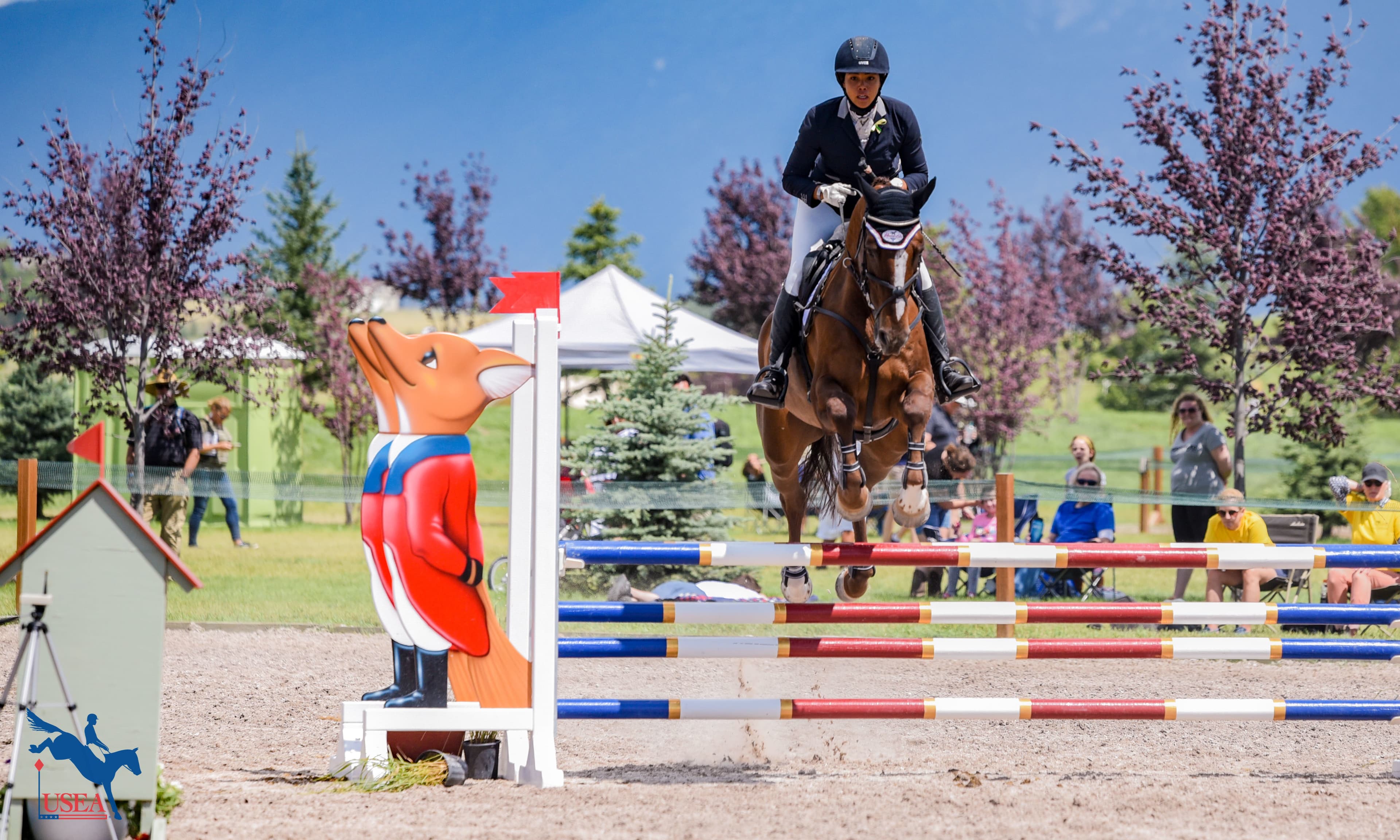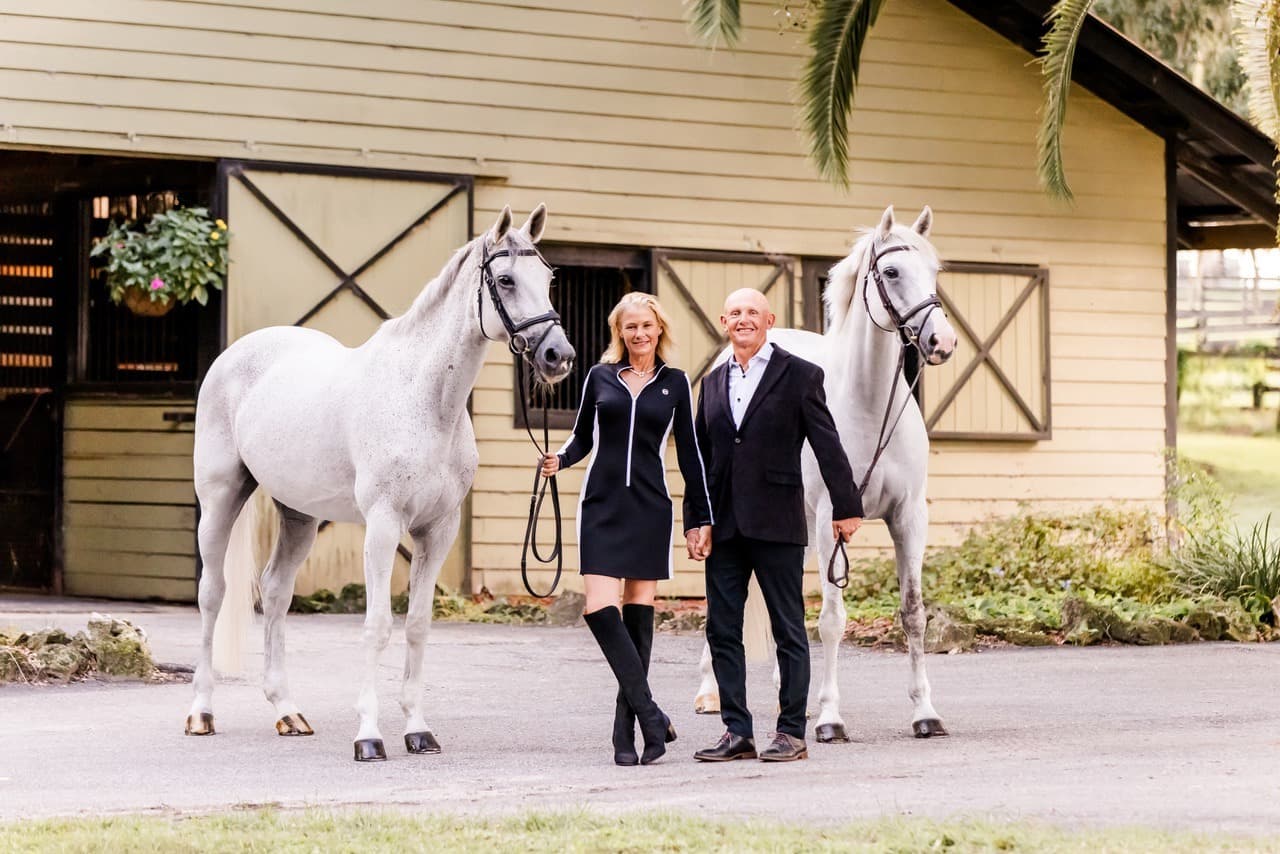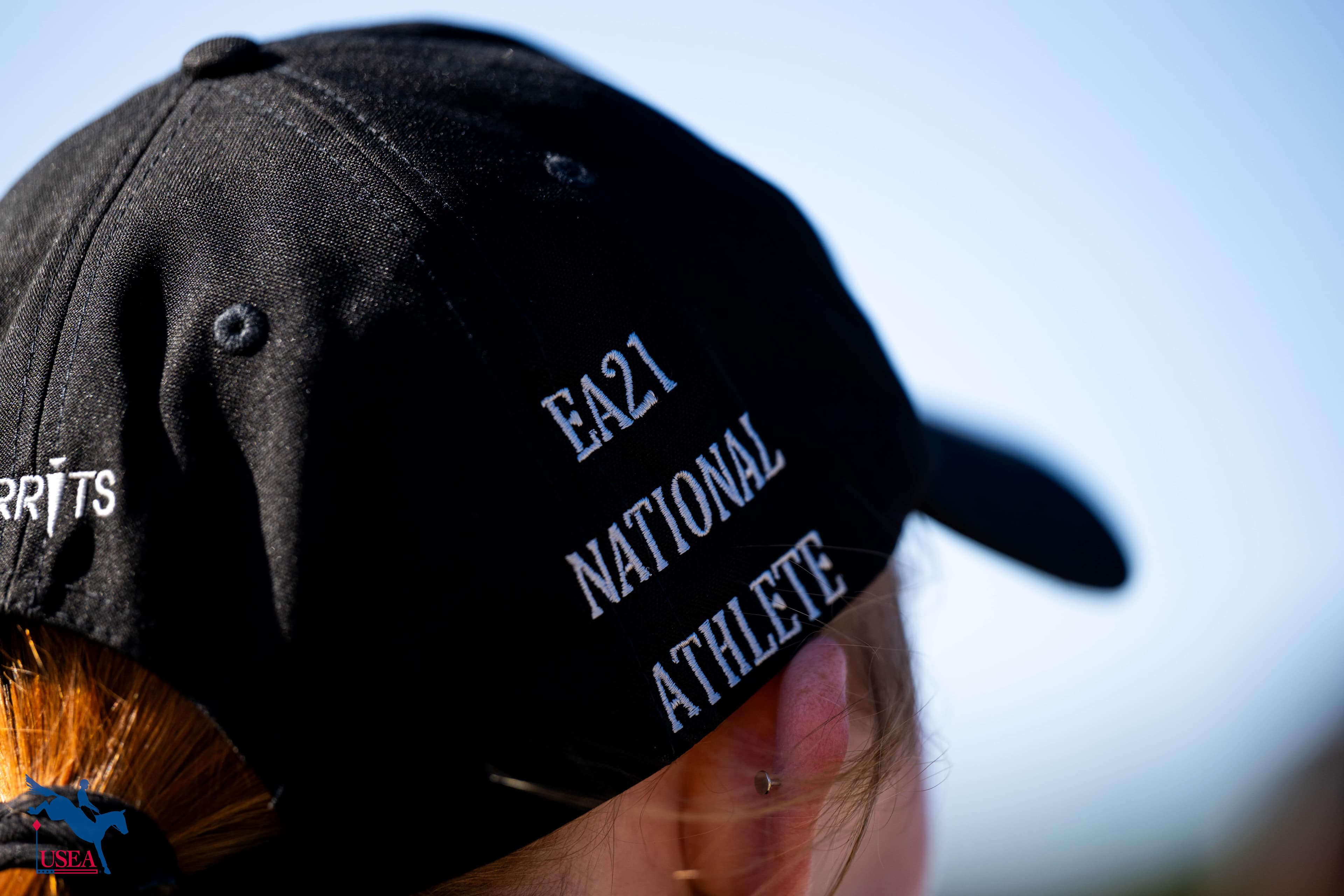Rule Refresher: Show Jumping Time and Faults

In the show jumping phase, where a ribbon can be won or lost based on a fraction of a second, it is important to understand the rules that determine how time is kept. After reviewing the rules concerning time and other show jumping penalties, one should also examine the rules that outline the faults incurred for each of the different types of penalties.
Text has been taken directly from the USEF Rules for Eventing with emphasis added by the USEA.
EV152 Time
1. The time of a round, recorded in seconds and in tenths of a second, with parts of a second counting as the next whole second (e.g. 60.2 seconds is recorded as 61 seconds), is the time taken by a competitor to complete the round, plus the time correction (EV152.8) if any.
a. It starts at the precise moment when the mounted competitor passes the starting line in the correct direction providing the starting signal has been given, or at the moment 45 second count-down expires. It extends to the moment when the mounted competitor crosses the finishing line in the correct direction, after having jumped the last obstacle.
b. Supported by one manual timer, electronic timing is strongly recommended for all National Divisions.
c. If electronic timers are not used, two manual timers, one of which is to be in line with both the start and finish lines, and has direct contact with the Jury, are required for all divisions.
2. TIME ALLOWED
a. The time allowed for a round in each competition is determined in relation to the length of the course and the speeds laid down under Annex 2.
3. TIME LIMIT
a. The time limit is equal to twice the time allowed for all competitions in which a time allowed has been laid down.
4. TIME ADJUSTMENT
a. The time allowed may be adjusted at the sole discretion of the judge(s), if they feel that a gross error in the measurement of the course has been made. This change may occur only after consultation with the course designer and technical delegate. Adjustment of the time allowed may never occur later than after the completion of a third round without disobedience. The time allowed may never be lowered resulting in the awarding of time faults to any competitors having ridden prior to the change without disobedience.
5. REFERENCE TIMES
a. The Time Allowed should be announced prior to the start of the class. After the first three competitors to complete the class without disobedience have completed their rounds, the Time Allowed and their times should be announced jointly. In cases where there is no electronic read out board, or it is not visible to riders in the in-gate area, the reference times for all the competitors in the class should be announced, along with their score.
6. INTERRUPTED TIME
a. While the clock is stopped, the competitor remains free to move around until the ringing of the bell gives him permission to start again. The clock is restarted when the competitor reaches the place where the clock was stopped. Exception, in the case of a disobedience with a knock-down EV152.9 applies.
b. The responsibility for starting and stopping the clock rests solely with the judge in charge of the bell. The timekeeper may not be made responsible for this function.
7. DISOBEDIENCES DURING INTERRUPTED TIME
a. The time of a round is interrupted only under the provisions of articles EV152.9 and EV152.10. The clock is not stopped in the event of a deviation from the course, a run-out or a refusal.
b. Disobediences are not penalized during interrupted time, except for the 2nd refusal following a refusal with a knockdown.
c. The provisions concerning elimination remain in force during interrupted time.
8. TIME CORRECTIONS
a. (Preliminary, Intermediate & Advanced) If, as the result of a disobedience, a competitor displaces or knocks down any obstacle, the bell is rung and the clock is stopped until the obstacle has been rebuilt. When the obstacle has been rebuilt the bell is rung to indicate that the course is ready and that the competitor can continue the round. The competitor is penalized for a refusal and a time correction of 6 seconds is added to the time taken by the competitor to complete his round. The clock is restarted at the moment when the horse leaves the ground at the obstacle where the refusal occurred. If a disobedience with the knock-down occurs at the second or subsequent part of a combination the clock is restarted when the horse leaves the ground at the first element of the combination.
b. (Modified Level and below) If, as the result of a disobedience, a competitor displaces or knocks down any obstacle, the bell is rung and the clock is stopped until the obstacle has been rebuilt. When the obstacle has been rebuilt the bell is rung to indicate that the course is ready and that the competitor can continue the round. The competitor is penalized for a refusal and a time correction of 6 seconds is added to the time taken by the competitor to complete his round. The clock is restarted at the moment when the horse leaves the ground at the obstacle where the refusal occurred or a second disobedience (w/o knockdown) occurs. If a disobedience with the knock-down occurs at the second or subsequent part of a combination the clock is restarted when the horse leaves the ground at the first element of the combination.
9. STOPPING DURING THE ROUND
a. In the event of a competitor not being able to continue his round for any reason or unforeseen circumstance, the bell should be rung to stop the competitor. As soon as it is evident that the competitor is stopping, the clock will be stopped. As soon as the course is ready again, the bell will be rung, and the clock will be restarted when the competitor reaches the precise place where the clock was stopped.
b. If the competitor does not stop when the bell is rung, he continues at his own risk, and the clock should not be stopped. The Ground Jury must decide whether the competitor is to be eliminated for ignoring the order to stop, or whether, under the circumstances, he should be allowed to continue. If the competitor is not eliminated, and is allowed to continue his round, the scores obtained at the obstacles preceding and following the order to stop will count whether they are good or bad.
c. If the competitor stops voluntarily to signal to the Ground Jury that the obstacle to be jumped is wrongly built or if due to unforeseen circumstances beyond the control of the competitor, he is prevented from continuing his round under normal circumstances, the clock must be stopped immediately.
1. If the dimensions are correct and the obstacle in question has been properly built or if the so-called unforeseen circumstances are not accepted as such by the Ground Jury, the competitor will be penalized as for stopping during the round (EV150.8a) and the time of his round will be increased by 6 seconds;
2. If the obstacle or part of the obstacle needs to be rebuilt or if the unforeseen circumstances are accepted as such by the Ground Jury, the competitor is not penalized. The time of the interruption must be deducted and the clock stopped until the moment when the competitor takes up his track at the point where he stopped. Any delay incurred by the competitor must be taken into consideration and an appropriate number of seconds deducted from his recorded time.
EV153 Faults
1. Faults made between the starting line and the finishing line must be taken into consideration.
2. Disobediences committed during the time when the round is interrupted (EV152.7) are not penalized.
3. Disobediences, falls etc., occurring between the signal to start and the moment the competitor crosses the starting line in the correct direction, are not penalized.
4. Faults are penalized in penalty points or by elimination as set out in this section (EV153).
- Obstacle knocked down while jumping - 4 penalties
- First disobedience - 4 penalties
- Second disobedience or other under rule EV154 at Preliminary, Intermediate and Advanced - Elimination
- Second disobedience or other under rule EV154 at Beginner Novice, Novice, Training, and Modified - 8 penalties
- Third disobedience or other under rule EV154 at Beginner Novice, Novice, Training, and Modified - Elimination
- Fall of horse or competitor or both - Elimination
- Exceeding the time limit - Elimination
- Exceeding the time allowed - 0.4 penalty per commenced second
5. Penalties for the disobediences accumulate, not just at the same obstacle, but throughout the entire round.
Want to catch up on past rule refreshers? Click here.














